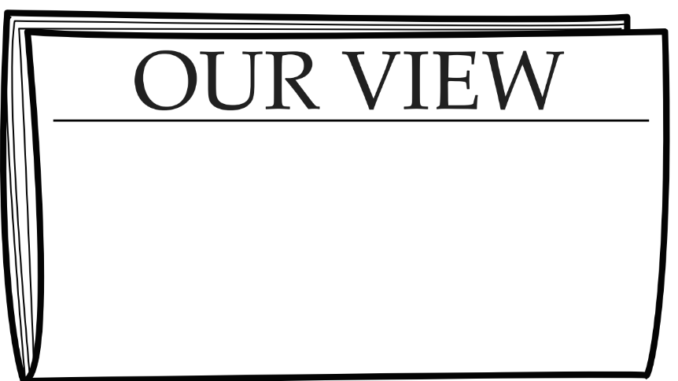
Truman State University’s decision to resume in-person operations this semester has been met with a variety of sentiments among students and staff. Some think it was necessary to regain a sense of interaction, while others argue the risk exceeds potential reward — and many lie somewhere in between. Nevertheless, administrators ultimately deemed on-site instruction to be worth uncertain possibilities. Despite our institution’s determination to proceed with current plans, the debate still remains: Should we have transitioned to an online format by now?
Reported active cases have fluctuated on campus, but within surrounding areas, those numbers are witnessing an alarming increase. Just last week, Adair County reached an all-time high of 17 infected individuals in one day, over 500 total cases and over 1,600 contact traces since March.
Truman stated its commitment to “making it happen” in its fall 2020 plan, listing numerous COVID-19 resources for members of the University, but neglected stating a case limit specifying when an outbreak would warrant remote work. As cases keep rising without definitive adjustment plans from the University, students and staff are left to wonder what it is that should be happening.
These challenges aren’t unique to our school. Amid a global pandemic, colleges and universities worldwide have faced immense dilemmas in devising and adapting educational settings to meet safety standards this fall. What makes this a distinct struggle for Truman, however, is the surrounding circumstances.
COVID-19 appeared during a time of relative desperation for the University: following multiple national news scandals in 2019, multiple years of enrollment decreases and a looming budget crisis, Truman was eager to draw prospective students through strategic means. The aim to provide a more differentiated image was made clear with new dorm offerings, reduced student restrictions and the unveiling of new promotional material only two weeks before shutting down for the semester.
As many higher education entities across the country revealed their intentions to continue remote learning through the fall, perhaps another distinguishing opportunity presented itself. Although other factors were likely considered, the growing incentive to restore funding and build student interest prompts many to wonder whether this gamble was implemented by design.
We, The Index Editorial Board, understand that there are several considerations contributing to decisions on course structure, but believe the most important motivation should be student well-being. With the illness now infiltrating several realms of college life, students and staff are placed in a tough position to choose between maintaining academic achievement or their health.
Most goals have evolved in some way over the past seven months. Sacrifices must constantly be made in order to preserve the lives of ourselves as well as those around us. The situation has changed our definitions of success as individuals — but what about institutions? As priorities reluctantly change for all affected, a university should be no exception.
A lower case total in comparison to other major universities is frequently cited as a testament to the school’s triumph, and administrators have regularly applauded the safety efforts of students and staff to make this happen. It is necessary to acknowledge, however, that any number of cases is too many if they could have been avoided.
Truman’s mission to provide mask-to-mask learning opportunities is a respectable objective, but should not be its end game. The idea of success as an academic establishment needs to revolve not around a quantitative measure of cases or days spent on campus, but rather the more qualitative aspect of overall health. Yes, learning is important and so is engagement — but neither of those are fully possible with a heightened risk of illness.
Numbers might provide a general understanding of the situation, but there are faces behind those figures. How many are worth the pursuits of an entity? Minimizing in-person demands during this time is not a failure, but willingly placing individuals at danger for sake of image or pride reveals both weakness and naivety. Going forward, we hope the University recognizes the gravity of their choices and subsequent broader impacts.
